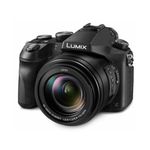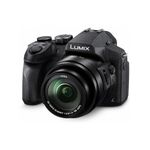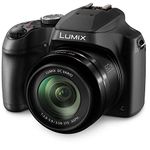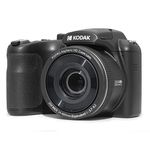10 bestPoint And Shoot Cameraof December 2025
112M consumers helped this year.
1
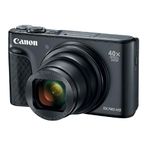
Canon PowerShot SX740 Digital Camera w/40X Optical Zoom & 3 Inch Tilt LCD - 4K Video, Wi-Fi, NFC, Bluetooth Enabled (Black)
Canon

10.0
2

KODAK PIXPRO Friendly Zoom FZ45-BK 16MP Digital Camera with 4X Optical Zoom 27mm Wide Angle and 2.7" LCD Screen (Black)
Kodak

10.0
13% off
3
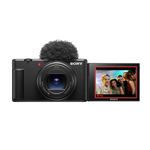
Sony ZV-1 II Vlog Camera for Content Creators and Vloggers
Sony

9.8
4

Canon Ixy 650 Digital Camera (Black)
Canon

9.7
5
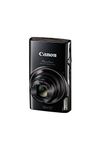
Canon PowerShot ELPH 360 Digital Camera w/ 12x Optical Zoom and Image Stabilization - Wi-Fi & NFC Enabled (Black)
Canon

9.6
Other
6
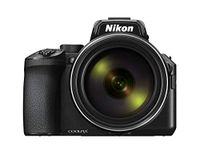
Nikon 32026 COOLPIX P950
Nikon

9.4
7
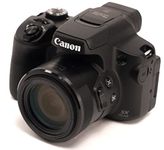
Canon Powershot SX70 20.3MP Digital Camera 65x Optical Zoom Lens 4K Video 3-inch LCD Tilt Screen (Black)
Canon

9.2
6% off
8
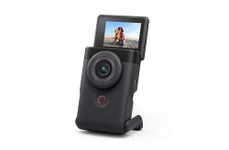
Canon PowerShot V10 Camera, Content Creator Compact Vlogging Camera, Fixed 19mm Wide-Angle Lens, 4K Video, Face Detection, Built-in Microphone, Live Streaming, Built-in Stand, Black
Canon

8.9
9

KODAK PIXPRO Friendly Zoom FZ55-RD 16MP Digital Camera with 5X Optical Zoom 28mm Wide Angle and 2.7" LCD Screen (Red)
Kodak

8.7
10

Sony DSCRX100M5A/B RX100VA 20.1MP Digital Camera: RX100 V Cyber-shot Camera with Hybrid 0.05 AF, 24fps Shooting Speed & Wide 315 Phase Detection-Black
Sony

8.4
A Guide to Selecting the Best Point And Shoot Camera
Choosing a point-and-shoot camera is all about finding the right balance between simplicity, portability, and image quality. These cameras are designed for ease of use, making them great for casual photographers or anyone who wants to capture moments without dealing with complex settings. When picking a point-and-shoot camera, it's important to focus on the features that will make your photography experience enjoyable and suited to your needs, whether that's travel, family events, or everyday snapshots.
Sensor Size
The sensor is the part of the camera that captures light and creates the image. Sensor size is important because a larger sensor generally means better image quality, especially in low light, and more ability to blur the background. Point-and-shoot cameras usually have smaller sensors compared to bigger cameras, but there are still differences. Small sensors (like 1/2.3-inch) are common and make the camera compact, but larger sensors (like 1-inch) offer better quality. If you want the best possible photos, especially in tricky lighting, look for a camera with a larger sensor. If you just want something small and easy to carry, a smaller sensor is fine.
Zoom Range
Zoom range tells you how close you can get to your subject without moving. It's usually shown as a number like 5x, 10x, or even 30x. A higher number means you can zoom in more, which is great for travel or wildlife shots. However, more zoom can make the camera bigger and sometimes the image quality drops at the highest zoom. If you mostly take photos of people or things nearby, a lower zoom is enough. If you want to capture faraway subjects, look for a higher zoom range.
Image Stabilization
Image stabilization helps reduce blur from shaky hands, especially when zooming in or shooting in low light. Some cameras have optical stabilization (inside the lens), while others use digital methods. Optical is usually better. If you often take photos indoors, at night, or zoomed in, image stabilization is very helpful. If you mostly shoot in bright light or use a tripod, it's less important.
Autofocus Speed and Modes
Autofocus is how quickly and accurately the camera can focus on your subject. Fast autofocus is important for capturing moving subjects, like kids or pets. Some cameras also offer face or eye detection, which helps keep people in focus. If you take lots of action shots or want to capture spontaneous moments, look for a camera with good autofocus features. For mostly still subjects, basic autofocus is usually enough.
Size and Weight
One of the main reasons to choose a point-and-shoot camera is portability. Smaller and lighter cameras are easier to carry everywhere, but sometimes this means fewer features or a smaller sensor. If you want a camera you can slip into your pocket, go for a compact model. If you don't mind a little extra size for better image quality or more zoom, consider a slightly larger camera.
Screen and Viewfinder
Most point-and-shoot cameras have an LCD screen for framing your shots. Some screens tilt or flip, which is useful for selfies or shooting at odd angles. A few cameras also have a viewfinder, which can help in bright sunlight when the screen is hard to see. If you often shoot outdoors or want to take selfies, look for a camera with a tilting screen or a viewfinder.
Video Capabilities
Many point-and-shoot cameras can record video as well as take photos. The main things to look for are resolution (like Full HD or 4K) and whether the camera has features like image stabilization for video. If you plan to shoot a lot of video, look for higher resolution and good stabilization. If video is less important, basic HD recording is usually enough.
Connectivity
Connectivity options like Wi-Fi or Bluetooth let you quickly transfer photos to your phone or computer, or even control the camera remotely. This is handy if you want to share photos right away or back them up easily. If you like to post photos online or use your phone for editing, look for a camera with good wireless features. If you prefer using a memory card and computer, this is less important.
Best Reviews Guide Newsletter
Get exclusive articles, recommendations, shopping tips, and sales alerts
Sign up for our newsletter to receive weekly recommendations about seasonal and trendy products
Thank you for subscribing!
By submitting your email address you agree to our Terms and Conditions and Privacy Policy
